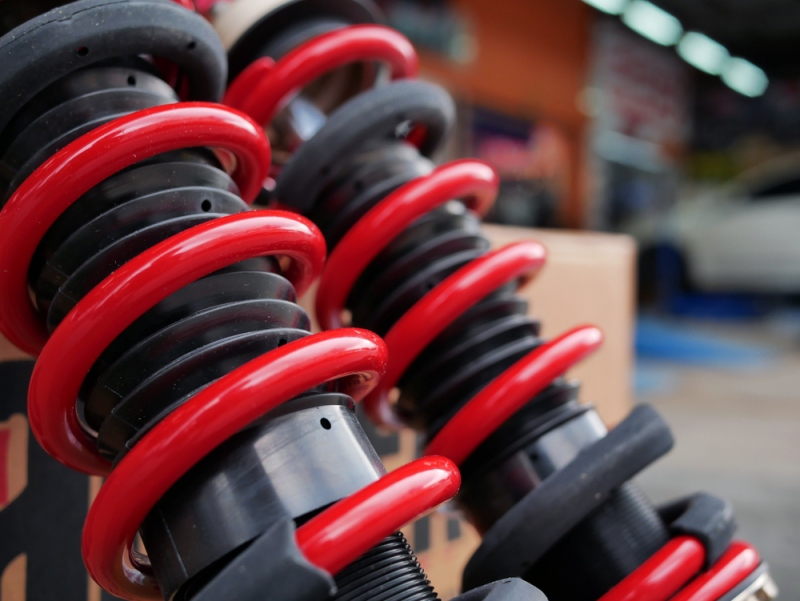The next time you fly over a pothole and don’t slam your head into the ceiling, you can thank your shocks. Shock absorbers are a crucial safety feature in every vehicle. Whether it’s protecting you from harm or your vehicle from damage, it’s essential to keep your shocks working properly. Find replacement shocks or upgrade to aftermarket Bilstein shock absorbers by comparing the common types of shock absorbers available.
The Purpose of Shock Absorbers
Regardless of the type of shocks you pick up, they all serve the same basic function. As you navigate uneven terrain, a vehicle without shocks would jolt, jostle and often lose contact with the ground. Unless the idea of soaring through the air unexpectedly sounds fun, your shocks are a necessary feature for comfort and safety while on the road.
All types of shocks work as dampers. A spring and hydraulic piston either inside or alongside your vehicle creates enough resistance to keep your car’s body bouncing and your tires safely on the road. This basic task can be accomplished in a number of ways, depending on the type of shock absorbers you choose.
Mono-Tube Shock Absorbers
Mono-tube shocks are aftermarket components that are designed for high-performance during rough rides. A single tube allows more airflow around the piston. Shocks generate heat as they travel, and more heat translates into reduced effectiveness.
Pick up mono-tube shocks if you’re willing to invest a little more in premium quality and high-performance traction control. Mono-tube shocks are ideal for off-roading rigs that see a lot of rough, uneven roads.
Twin-Tube Shock Absorbers
Typical shocks use a twin-tube design. Your OEM shocks are probably twin-tube, so if you’re looking for an exact replacement then you should shop for these. Practical and affordable, these shocks still get the job done. They’re reliable enough for most driving conditions and are the most widely available option.
Gas-Filled Shock Absorbers
For more extreme off-road conditions, gas-filled shock absorbers are an excellent option. Unlike traditional hydraulic means, these shocks use high-pressure gas above the oil chamber to provide resistance. Most drivers won’t notice the negative effects of traditional hydraulic shocks, but high-end racing situations demand a more powerful, reliable alternative. Avoid the bubbling, degrading and overheating that typically comes with mono-tube and twin-tube shocks during your off-road racing.
External Reservoir Shocks
Finally, the cream of the crop is external reservoir shock absorbers. These high-end shocks are typically reserved for racing conditions, but offer the best shock absorption in demanding situations. A smaller shock body is connected to an oil reservoir found elsewhere on your vehicle. This setup allows you to fine-tune the oil flow, reduce weight around your wheel and quickly cool off your oil in high-stakes situations.
Pick the Best Shocks for Your Situation
Of course, there are many brands and styles of shock absorbers that fit into these four basic categories. It’s best to talk to a professional about your driving style and find out which option works best for your vehicle. For more information, or to pick up your new set of killer aftermarket shocks, find a truck accessories store near me.
